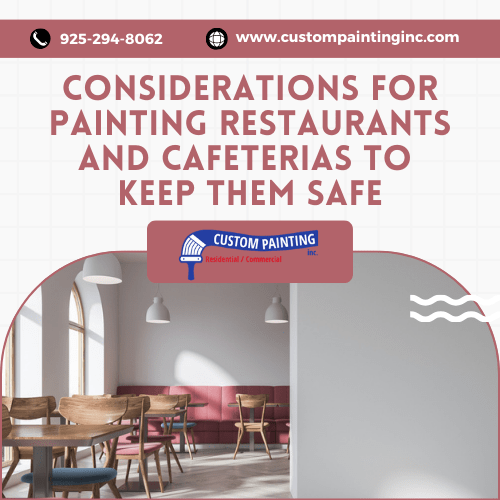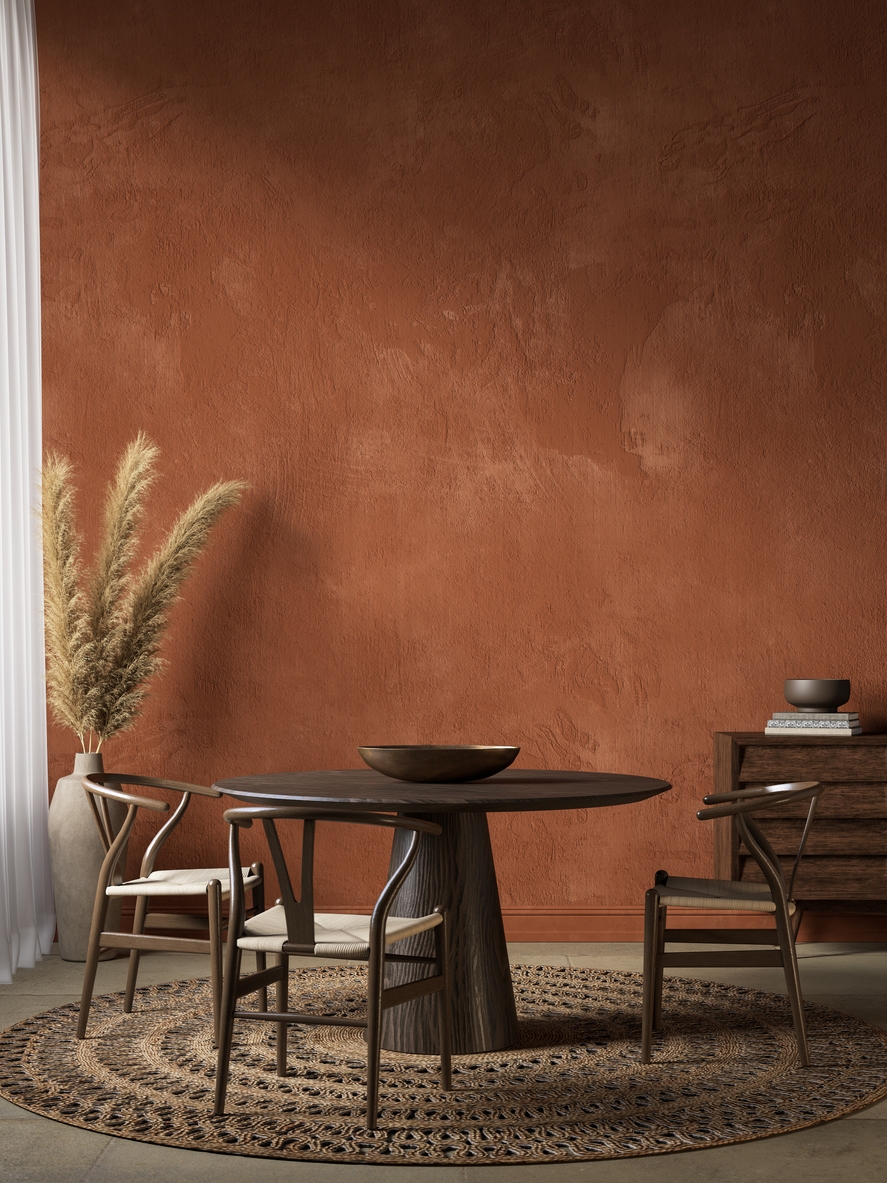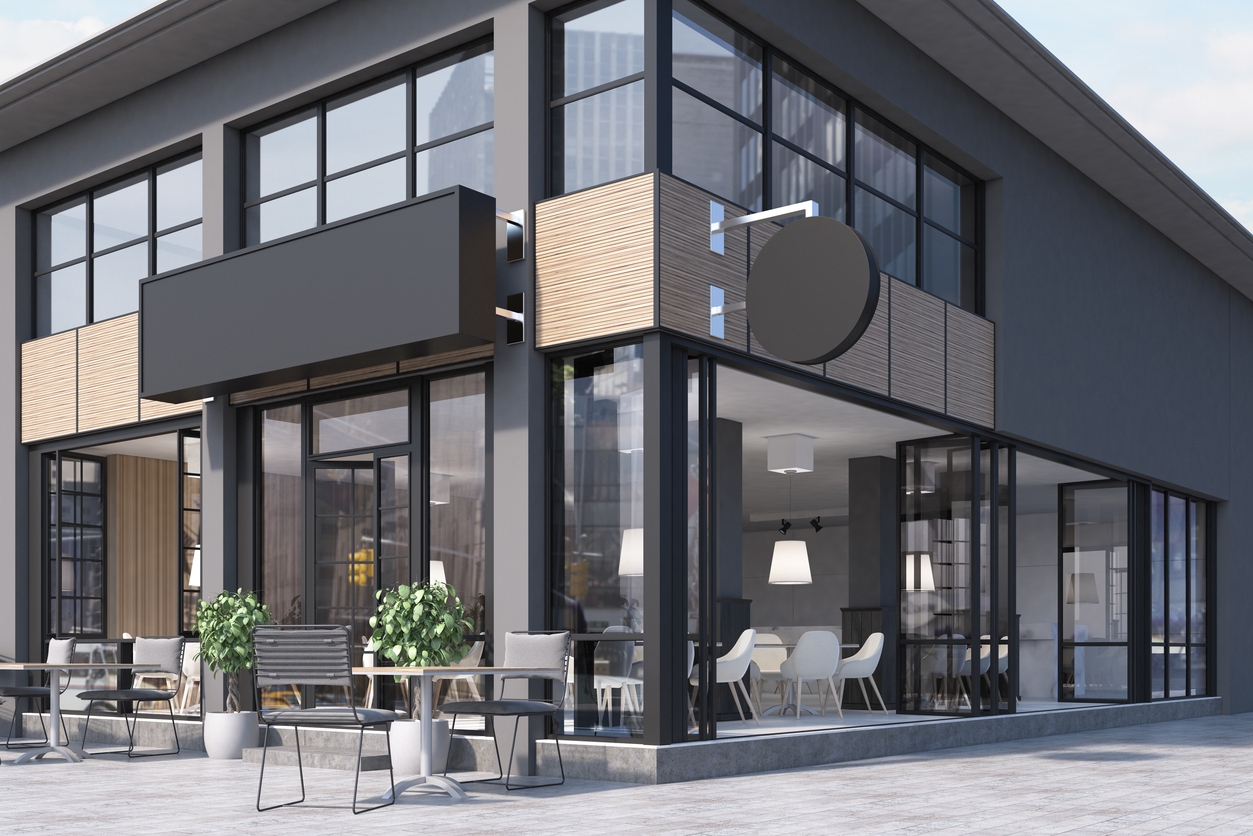Safety is an essential aspect that is often overlooked when painting Sunnyvale area restaurants and cafeterias. While it’s easy to get caught up in choosing the perfect colors and finishes to create an inviting atmosphere, ensuring the safety and well-being of both staff and patrons should be a top priority.
Why is Safety Important in Commercial Painting
Imagine walking into a beautifully painted Fremont restaurant, only to be greeted by the smell of harsh chemicals or noticing chipped paint near the kitchen area. Not only does this affect the dining experience, but it also raises concerns about health and safety standards. That’s why it’s essential to think beyond aesthetics and focus on creating a safe environment.
First and foremost, restaurants and cafeterias must adhere to strict health and safety regulations to protect the health and well-being of their customers and staff. Using the wrong kind of paint can release harmful fumes into the air, which can be particularly dangerous in a setting where food is prepared and served. Non-toxic, low-VOC (Volatile Organic Compounds) paints are a safer choice because they emit fewer pollutants, making the air cleaner and healthier to breathe.
But safety isn’t just about the type of paint used. It also involves how and when the painting is done. Imagine trying to enjoy a meal while a painter works nearby, or worse, dealing with the lingering smell of fresh paint. Proper scheduling, like painting during off-hours or when the establishment is closed, can help minimize disruptions and ensure that any fumes dissipate when customers return.
Safety in painting also extends to fire prevention. Certain areas in a restaurant or cafeteria, such as kitchens, need to meet specific fire safety standards. This might involve using fire-retardant paints that can help prevent the spread of flames in the event of a fire. Choosing the right materials and following fire codes can significantly reduce the risk of fire-related incidents.
Here are the considerations to keep safety a priority when painting these establishments:
1. Choosing the Right Paint
Choosing the right paint for your Union City restaurant or cafeteria is more important than you think. It’s not just about finding the perfect color to match your décor – it’s also about ensuring the safety and well-being of everyone who steps through your doors. One of the critical factors to consider is the type of paint you use, specifically focusing on non-toxic, low-VOC (Volatile Organic Compounds) paints.
Let’s start with VOCs. These chemicals can easily become vapors or gases, and they’re found in many traditional paints. The problem with VOCs is that they can release harmful fumes into the air, which isn’t good for anyone, especially in a place where food is being prepared and served. These fumes can cause headaches, dizziness, and other health issues, not just for your customers but also for your staff, who spend a lot of time in the building.
That’s why low-VOC and non-toxic paints are a much safer choice. These paints emit fewer harmful chemicals, making the air in your restaurant or cafeteria cleaner and healthier. This is particularly important in a food establishment where maintaining hygiene and air quality is essential.
When you choose non-toxic, low-VOC paints, you’re also being environmentally friendly. These paints have a lower environmental impact because they reduce the number of pollutants released into the air. It’s a win-win situation: you create a safer environment for your customers and staff while also doing your part to protect the planet.
But how do you know which paints are truly low-VOC and non-toxic? Look for products certified by reputable organizations like Green Seal or LEED. These certifications indicate that the paint meets stringent health and environmental safety standards. It’s also a good idea to read the labels carefully and, if possible, get recommendations from professional painters specializing in commercial projects.
2. Adhering to Health Regulations
Restaurants and cafeterias in the Milpitas area must follow local health and safety regulations. These are in place for a reason: to protect the health and well-being of both customers and staff. Ignoring these rules can lead to severe consequences, from health hazards to hefty fines or even closure. So, how will your painting choices affect these regulations?
Hygiene and cleaning
Maintaining a high level of hygiene is essential in any San Jose food establishment. This means that every surface, including walls and ceilings, must be easy to clean and sanitize. Using the correct type of paint can help with this. For example, paints that are resistant to moisture and grease make it easier to wipe down surfaces and prevent bacteria and mold buildup. This is especially important in kitchens and dining rooms, where cleanliness directly impacts food safety. There can be challenges for such as removing an acoustic ceiling before painting as an example.
Fire safety
Then, there are fire codes to consider. Fire safety is a major concern in restaurants and cafeterias because of the cooking equipment and open flames used in food preparation. Certain areas, like the kitchen, need to have fire-retardant paint. This type of paint can help prevent the spread of fire, giving everyone more time to evacuate in case of an emergency. It’s a small investment that can make a massive difference in terms of safety.
Sanitation standards
Sanitation standards also play a big role. These standards ensure that your restaurant or cafeteria is safe for people to eat. This involves using paints that don’t chip easily and can withstand frequent cleaning. Flaking or peeling paint can contaminate food and create an unsanitary environment, so choosing durable, high-quality paint is essential.
To ensure you’re meeting all the necessary regulations, consult with professionals familiar with local codes. They can advise you on the best products and practices to use. Additionally, you should always stay updated on any changes to health and safety regulations, as these can change over time.
3. Scheduling and Minimizing Disruptions
Painting a Sunol restaurant or cafeteria is a big job; doing it right means planning carefully to minimize disruptions to your business. After all, you don’t want your customers to deal with the smell of fresh paint or see painters at work while they’re trying to enjoy a meal. Here are some tips to help you schedule your painting project effectively and ensure proper ventilation for a smooth, hassle-free experience.
Choose the right time
The first step is to choose a time when your restaurant or cafeteria is least busy. For many places, this might be late at night, early in the morning, or during off-peak seasons. Some establishments even close for a day or two to complete the painting without interruptions. Planning your painting project during a slower period can help reduce the impact on your customers and your daily operations.
Break it down
Instead of painting the entire space all at once, consider breaking the project down into smaller sections. This way, you can keep most of the restaurant open while one area is being painted. For example, you can paint the dining area one night and the kitchen another. This phased approach can help keep your business running smoothly while still getting the job done.
Communicate with staff and customers
Communicate with your staff and customers about the painting schedule. Let your staff know in advance so they can prepare, and inform your customers through signs or social media about any temporary changes. Clear communication helps manage expectations and reduces frustration.
Ensure proper ventilation
Proper ventilation is crucial when painting, especially in a food establishment. Good airflow helps quickly dissipate fumes and keeps the air quality safe. If possible, open windows and doors to create a cross-breeze. You might also consider using fans or air purifiers to help with ventilation. As mentioned earlier, low-VOC paints emit fewer fumes, making the environment safer and more pleasant.
Hire professionals
Hiring professional painters with Newark, CA area commercial project experience can make a big difference. They can work efficiently and are usually more adept at minimizing disruptions. Professionals also know how to handle the logistics of painting in a busy environment, ensuring that the job is done quickly and correctly.
Plan for drying time
Don’t forget to account for drying time. Paint needs time to set properly before the area can be used again. Scheduling your project with adequate drying time ensures that when your customers return, they won’t be greeted by wet paint or lingering odors. Check the paint manufacturer’s recommendations for drying times and plan accordingly.
Clean up thoroughly
Once the painting is done, a thorough cleanup is essential. Ensure all painting materials are cleared away, and the space is spotless before reopening it to customers. This keeps your restaurant looking professional and ensures no hazards are left behind.
Final Word
If you’re ready to give your restaurant or cafeteria a fresh, safe, and beautiful new look, consider hiring Custom Painting, Inc. Our team of experienced professionals understands the unique needs of commercial food establishments and is dedicated to delivering high-quality, safe painting solutions.
Call us today at 925-866-9610 to learn more about our services and schedule a consultation. If you would like, you can also complete our online form, and someone from our office will contact you. Let us help you create a dining space that’s visually appealing, safe, and welcoming for everyone.




